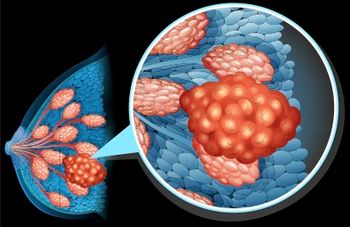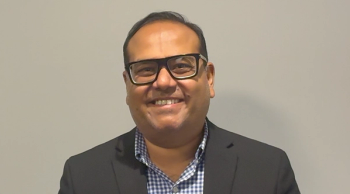
Oncology NEWS International
- Oncology NEWS International Vol 9 No 2
- Volume 9
- Issue 2
Sentinel Node Biopsy: Reasons for Failure
GREENVILLE, NC-Patient age and surgeon experience appear to play the biggest role in failure of sentinel lymph node biopsy for detection of breast cancer, according to a large multicenter clinical trial presented at the San Antonio Symposium.
GREENVILLE, NCPatient age and surgeon experience appear to play the biggest role in failure of sentinel lymph node biopsy for detection of breast cancer, according to a large multicenter clinical trial presented at the San Antonio Symposium.
In a multivariate analysis of potential factors associated with biopsy failure, only patient age of 50 years or greater and a procedural experience of 10 or fewer cases correlated significantly with failure, said Peter Ng, MD, of East Carolina University.
Our data also suggest that medial tumor location correlates with a higher false-negative rate, though the correlation was not statistically significant in our series, Dr. Ng said.
Dr. Ng reported findings from the first prospective, randomized, multicenter trial that used both radiolabeled sulfur colloid and isosulfan blue dye to identify sentinel nodes. The study involved 485 patients and 41 surgeons. Three fourths of the patients had infiltrating ductal carcinoma, and 90% of the tumors were smaller than 5 cm. All sentinel node findings were confirmed by axillary node dissection.
Participating surgeons were not required to have any prior experience with sentinel node biopsy outside of an initial training course, Dr. Ng said. No surgeon had participated in a learning trial of sentinel node biopsy prior to joining the study.
The surgeons successfully identified the sentinel node in 420 of the 485 patients for an 87% success rate. In addition to the 65 patients with no sentinel node identified, there were 18 false-negative sentinel node biopsies (13%). A false-negative finding was defined as identification of a sentinel node that proved to be pathologically negative with a positive nonsentinel node identified by axillary dissection.
Correlation analysis of factors associated with biopsy success and failure included surgeon experience, probe type, primary tumor location, tumor size, method of tumor diagnosis (fine needle aspiration, core biopsy, previous lumpectomy, or previous biopsy), patient age, vascular lymphatic invasion, and dye injection interval.
Independent Predictors
Only patient age and surgeon experience proved to be significant independent predictors of sentinel node biopsy outcome. Mapping failure occurred in 5.1% of patients younger than 50, compared with 15.4% in patients 50 and older. Surgeons who performed more than 10 cases had a failure rate of 8.2%, compared with 17.9% for surgeons who had performed 10 or fewer cases.
Medial tumor location was a statistically significant predictor of biopsy success in a univariate analysis, but not in the multivariate analysis.
On the basis of our results, we recommend that surgeons not abandon complete axillary node dissection without adequate sentinel node experience, Dr. Ng concluded, and that surgeons show discretion in applying this technique to older patients and those who have medial tumors.
A Decrease in Lymphatics?
In answer to a question, Dr. Ng hypothesized that the failure rate in older women is due to anatomical changes that develop with age and fatty changes in the breast. Theres probably a decrease in the lymphatics that in some way contributes to the increased failure rate, he said.
When asked how many procedures are generally required to achieve an adequate success rate, Dr. Ng said he agreed with the consensus statement of the American College of Surgeons, which recommends 30 cases, with a success rate of greater than 85% and a false-negative rate of less than 5%.
Articles in this issue
almost 26 years ago
Neoadjuvant Docetaxel Increases Response Rate in Large Breast Tumorsalmost 26 years ago
Faslodex, a Pure Antiestrogen, Shows Antitumor Activityalmost 26 years ago
Consider Node Dissection, Adjuvant Therapy in Elderly Breast Cancer Patientsalmost 26 years ago
Tumor-Associated Proteases Predict Outcome in Node-Negative Patientsalmost 26 years ago
Herceptin Plus Vinorelbine a Promising Combination in Advanced Breast Canceralmost 26 years ago
Small Risk of Breast Cancer Death After Invasive Recurrence in DCIS Patientsalmost 26 years ago
Paclitaxel/Herceptin Effective in Metastatic Breast Canceralmost 26 years ago
Conservative Surgery Alone Not Sufficient to Prevent RecurrenceNewsletter
Stay up to date on recent advances in the multidisciplinary approach to cancer.



















































































